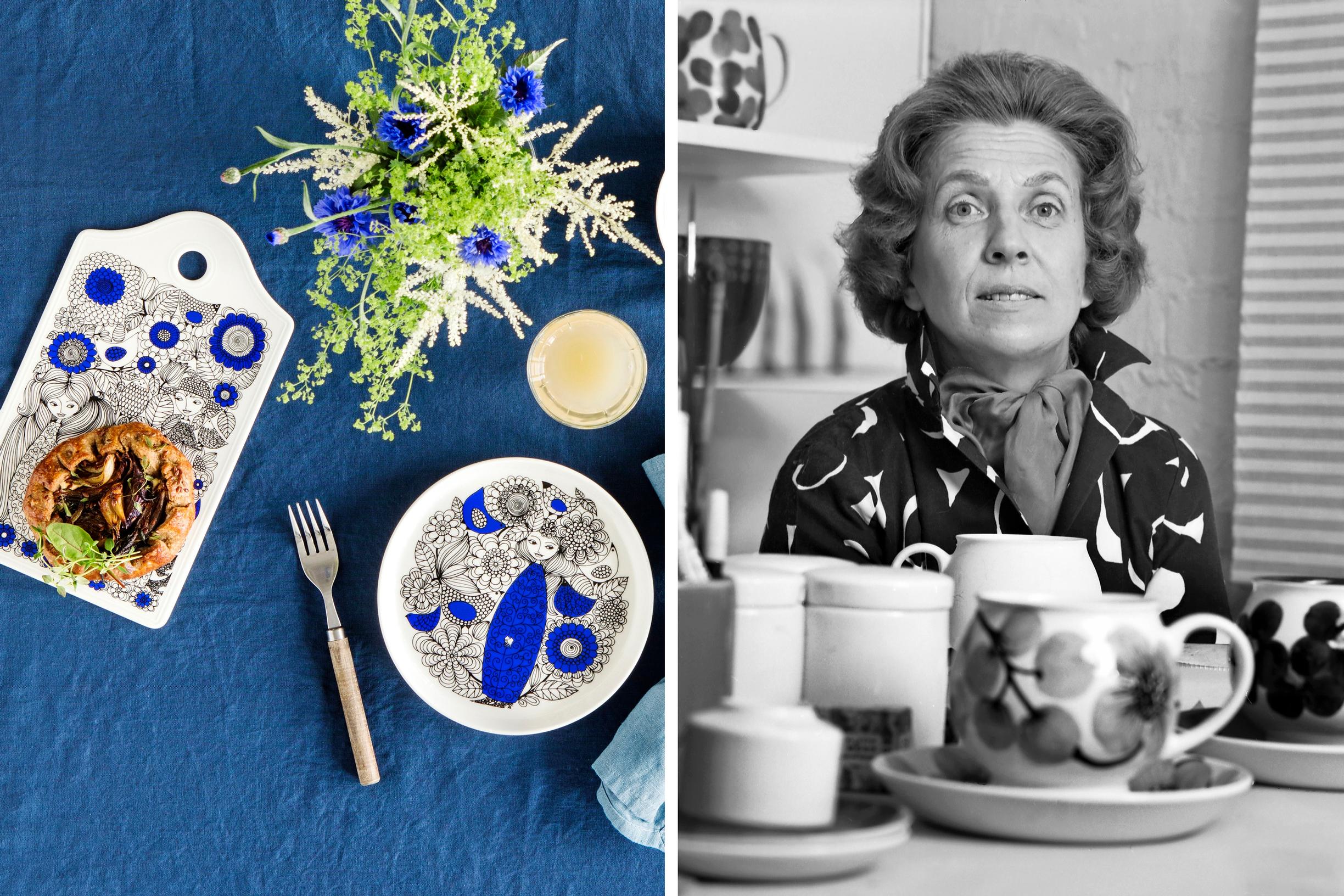
Always in style: Finland’s short summer inspired Esteri Tomula’s lush botanical designs
For nearly 40 years, Esteri Tomula served as a decorative artist at Arabia ceramics company. Although design gurus initially opposed her ornate style, her floral and ornamental motifs have captured buyers’ hearts decade after decade.
When you admire the porcelain motifs Esteri Tomula designed over the decades, Eino Leino’s classic poem Nocturne comes to mind: “...fragrant twinflower, shortening, lingering shade; these the things from which my heart-song’s made.” (translation by Rupert Moreton) The wild strawberries, harebells, speedwells, Labrador tea, twinflowers, and lingonberries in Tomula’s Botanica, Metsämarja (“wild berry”), and Flora collections reflect that same profound bond with Finland’s nature.
With her achievements, Tomula stands among Finland’s finest porcelain illustrators alongside Birger Kaipiainen and others, even though she focused on everyday objects and found much of her inspiration in the flora of Finland’s short summer, from roadside flowers to forest berries. Her beautifully patterned dishes and decorative plates are at once delicate and lush, reserved and vibrant, of their era yet timeless.

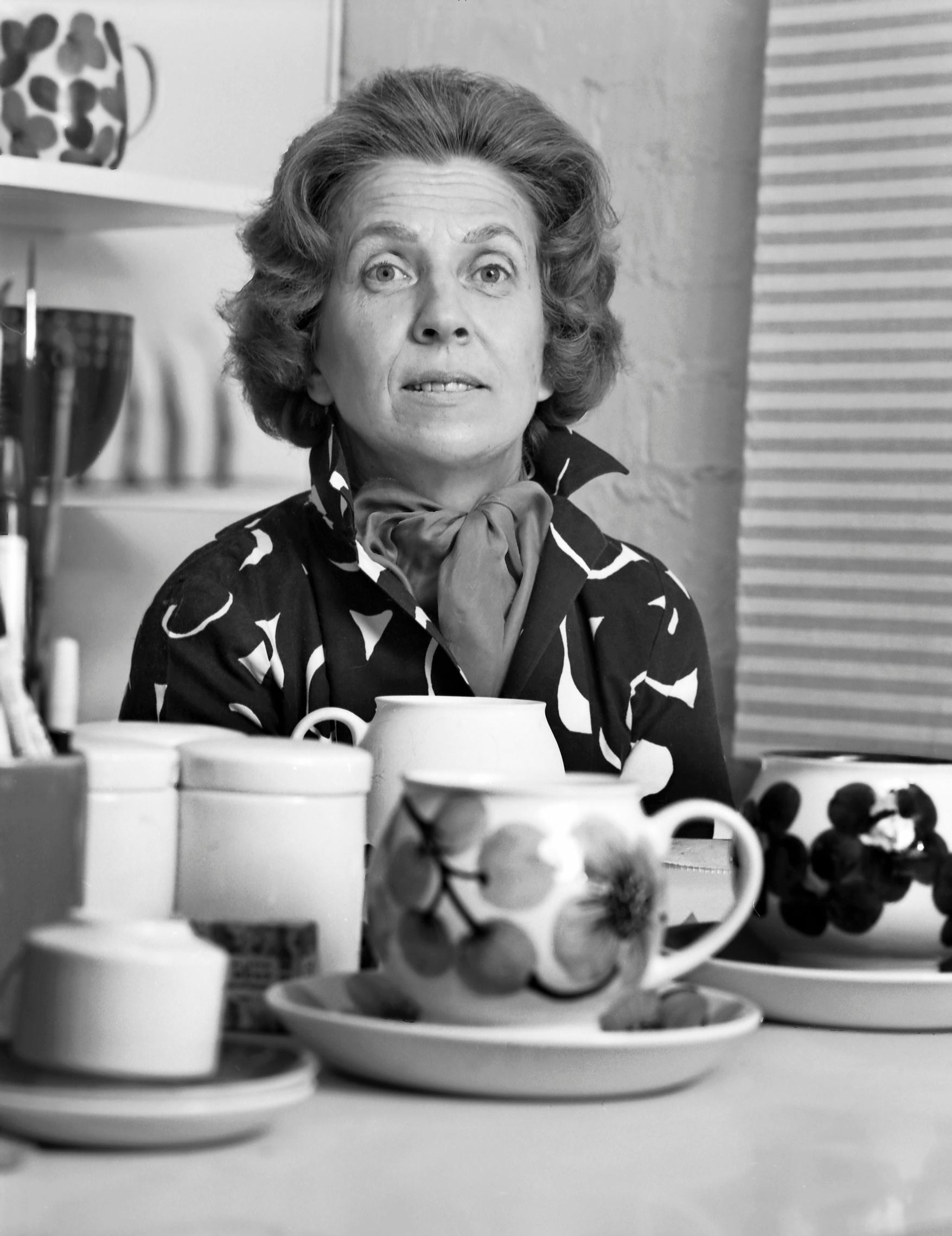
Ilta Esteri Tomula (1920–1998), known to her friends and coworkers as Essu, was born and raised in Helsinki. However, her father, Professor of agricultural chemistry at the University of Helsinki Emil Tomula , had roots in a peasant family from the Satakunta region.
Her father bought the family a summer cottage in Hanhisuo, Urjala, and that's where Tomula’s appreciation for nature’s small details originated. She saw beauty in every tiny inhabitant of the yard, garden, or forest. As an adult, she spent every vacation at Hanhisuo for as long as her health allowed.
Her physical condition played an unusually challenging role in Tomula’s life. Congenital short stature limited her mobility and shaped many of her life decisions.
After finishing high school, young Esteri began her studies in the ceramics department at Ateneum, specializing in porcelain painting and decorative arts, as working with heavy clay would have been impossible for her. It looked as though her short fingers lacked some of the joints.
The mobility challenges she faced did not hinder her drawing and painting, which became her specialty in the most enchanting way.
The gurus of Finnish Design resisted decorative ornamentation, but flowers and ornaments won the hearts of buyers.

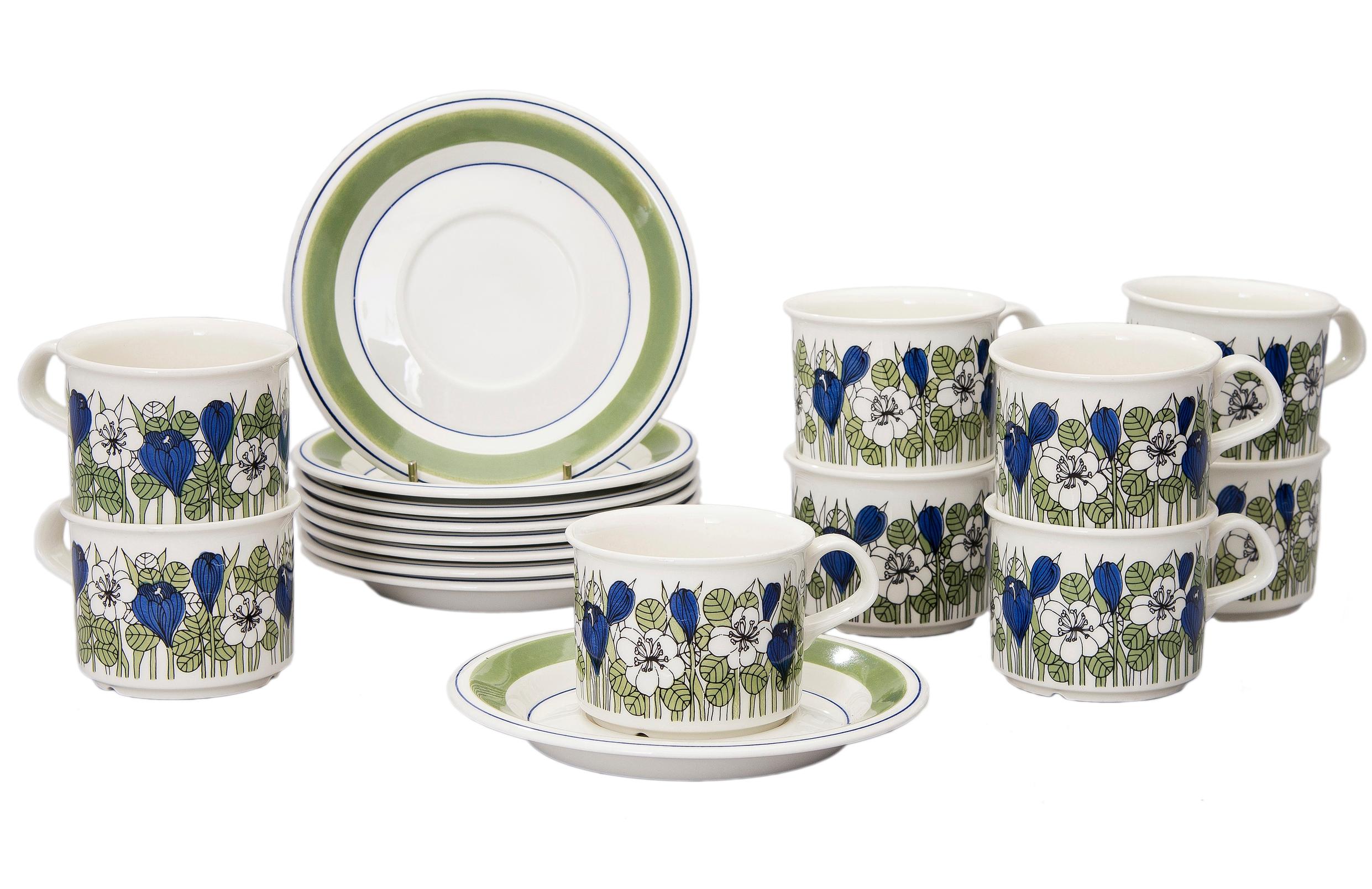

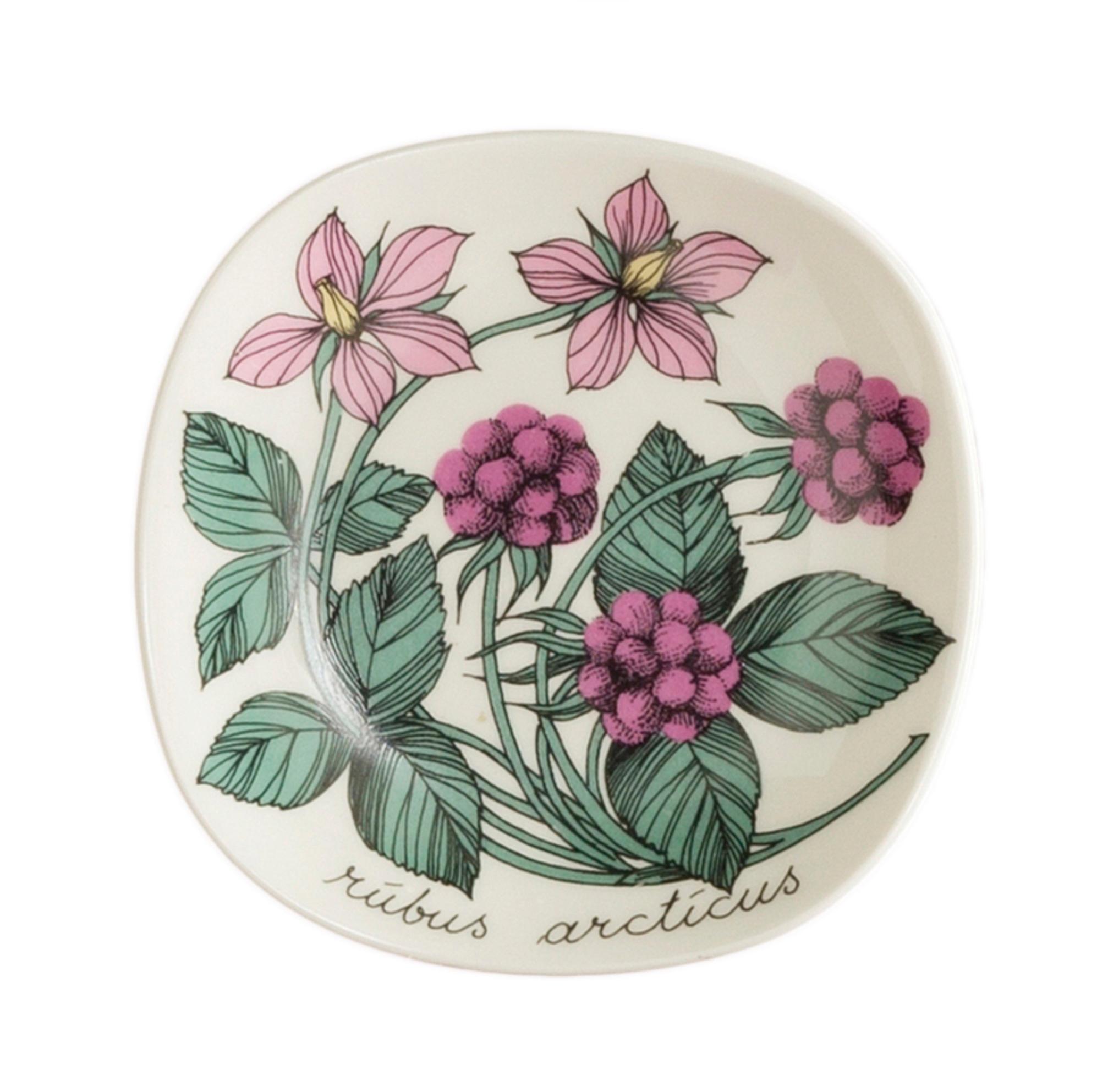
When she graduated in 1947, Esteri Tomula joined the Arabia factory as a decorative artist. At the same time, her classmate Raija Uosikkinen also started in the same position. They became close colleagues for decades.
The gurus of Finnish Design weren’t keen on decoration, but flowers and ornaments won over the women who bought porcelain items for their homes. As a result, all through the 1940s and ’50s, the works of the product design department led by Olga Osolin and later Kaj Franck featured increasingly lavish decoration.
In the 1960s and ’70s, decoration trends were more subdued, but the popularity of patterns bounced back when the children and grandchildren of the baby boom generation started their own households.
Vintage Arabia has many avid collectors. In the book Keräilijän aarteet (“Collector’s treasures”), Reijo Qvintus, a principal from Espoo who has collected more than 400 pieces decorated by Esteri Tomula, says that his passion for collecting was sparked by a Primavera pitcher he brought along from his childhood home in Iisalmi. This early 1970s design is based on a floral theme, stylized in the spirit of the time.
Tomula was always sketching, and her sense of composition, line work, and color was unmatched. Early miniature images, harlequins, and other playful characters are often mentioned, but only a handful of these drafts ever went into production. Most were turned down by the marketing department with the blunt claim “they won’t sell.”
Still, the number of designs produced is impressive, and even now, you can find new items featuring her Pastoraali motif available in stores.

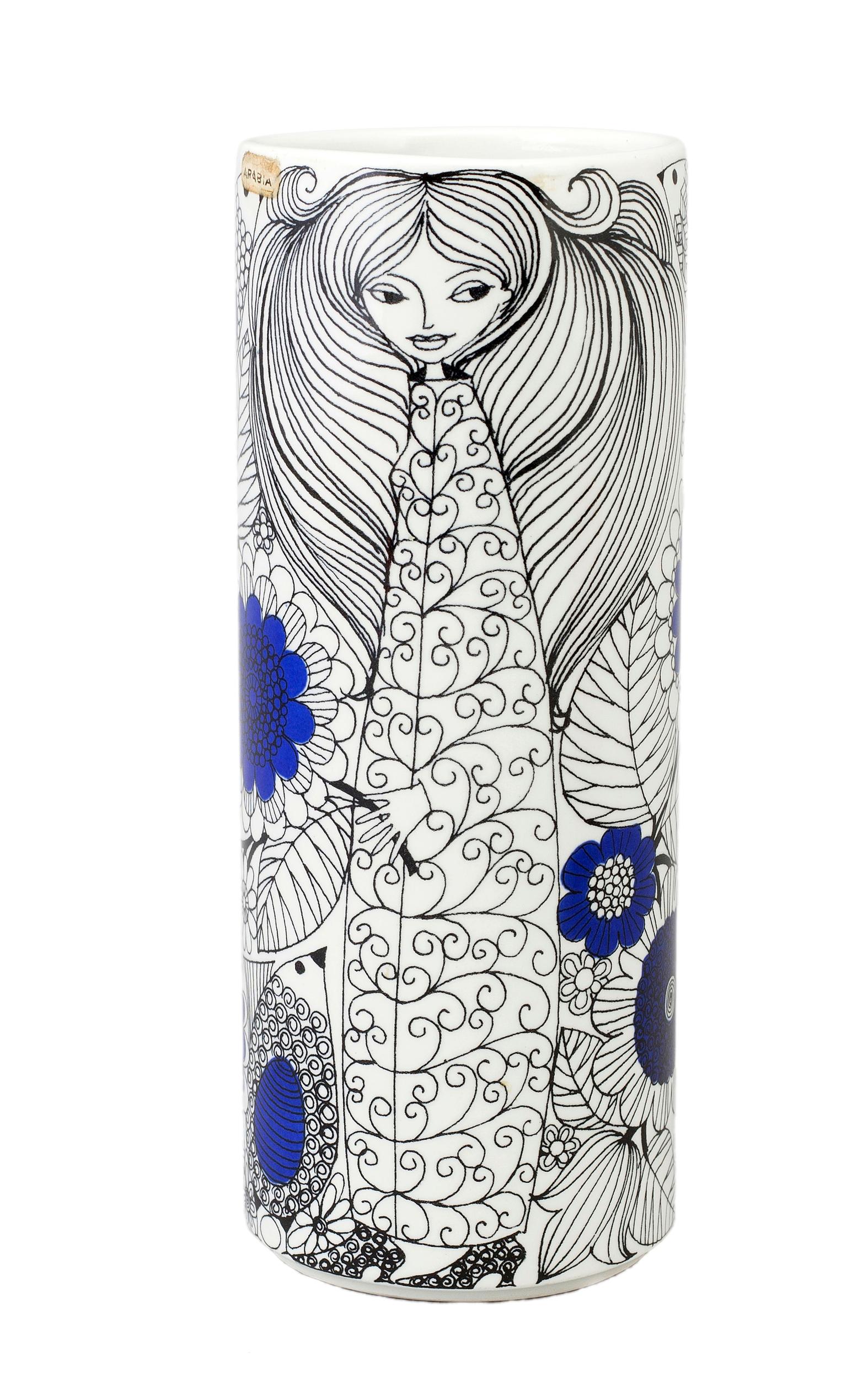

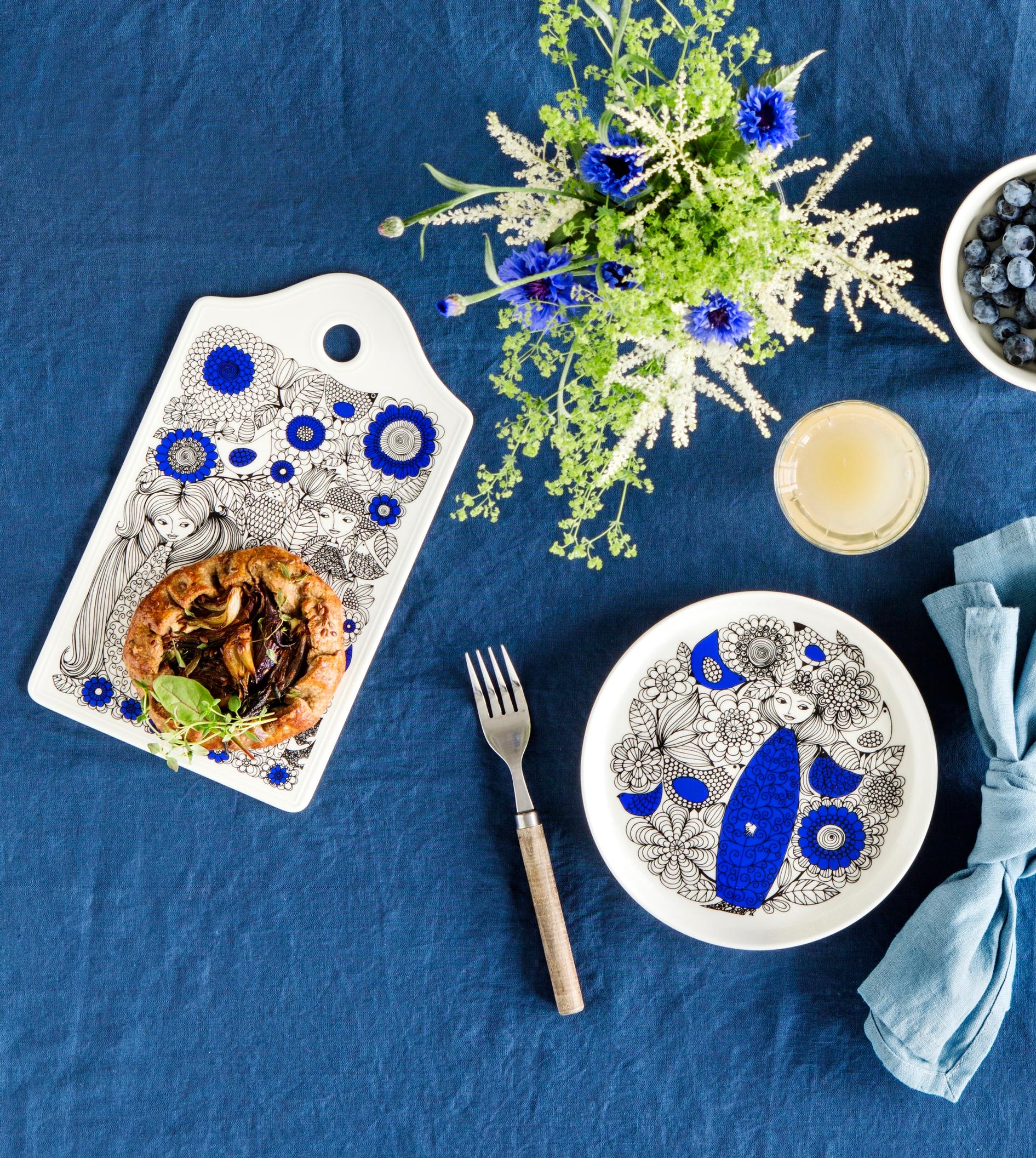
In the 1950s, Tomula boldly combined her printed designs with hand painting: the outlines of the patterns were printed, and then color and details were added by hand. Arabia acquired its own silkscreen printer around the turn of the 1960s.
All 36 of the small wall plates in the Botanica series were created between 1978 and 1989 and were complemented by 17 rose-themed plates in the Rosa collection as well as 12 Metsämarja plates.
Tomula’s artistry was showcased not only on porcelain but also in enamel. Under the Finel brand of Järvenpään Emali, she decorated fashionable pots and saucepans with motifs such as the Vegeta vegetables and the fantastical fish design Neptun.
Esteri Tomula had a strong personality, and her coworkers have often recalled her explosive temperament. At the same time, she was the captivating centerpiece of any social gathering, earning the nickname "the grand duchess" from her friends. Her close friend, journalist Antti Nuortio has reminisced:
"It was a blessed miracle that despite her physical limitations, Esteri was able to live so richly and sociably right up to the end of her life. Even the list of places she traveled—Paris, Brussels, Nice, Ibiza, Marbella, Prague, Petrozavodsk, Tallinn, Moscow, and so on—is impressive."

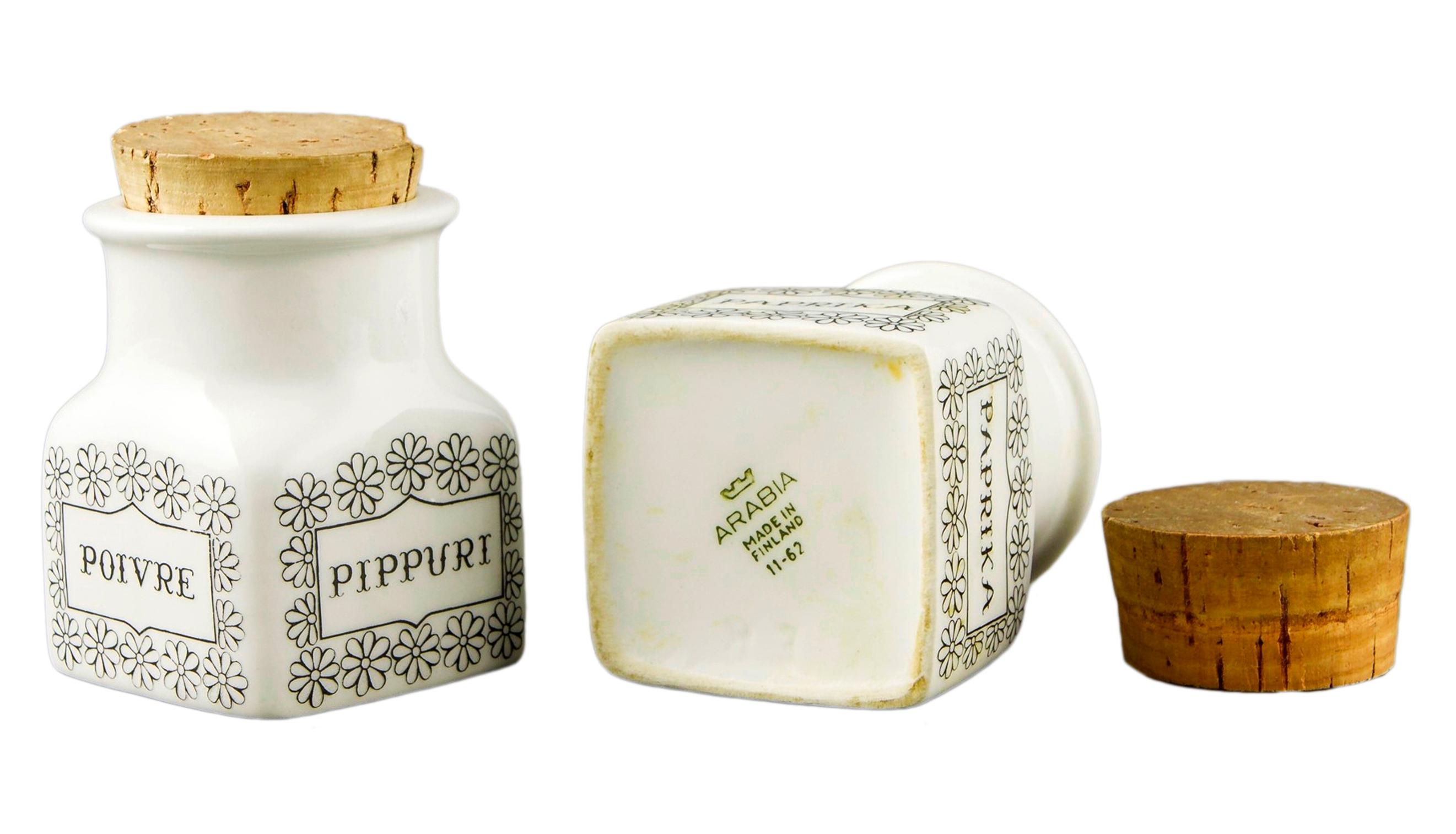

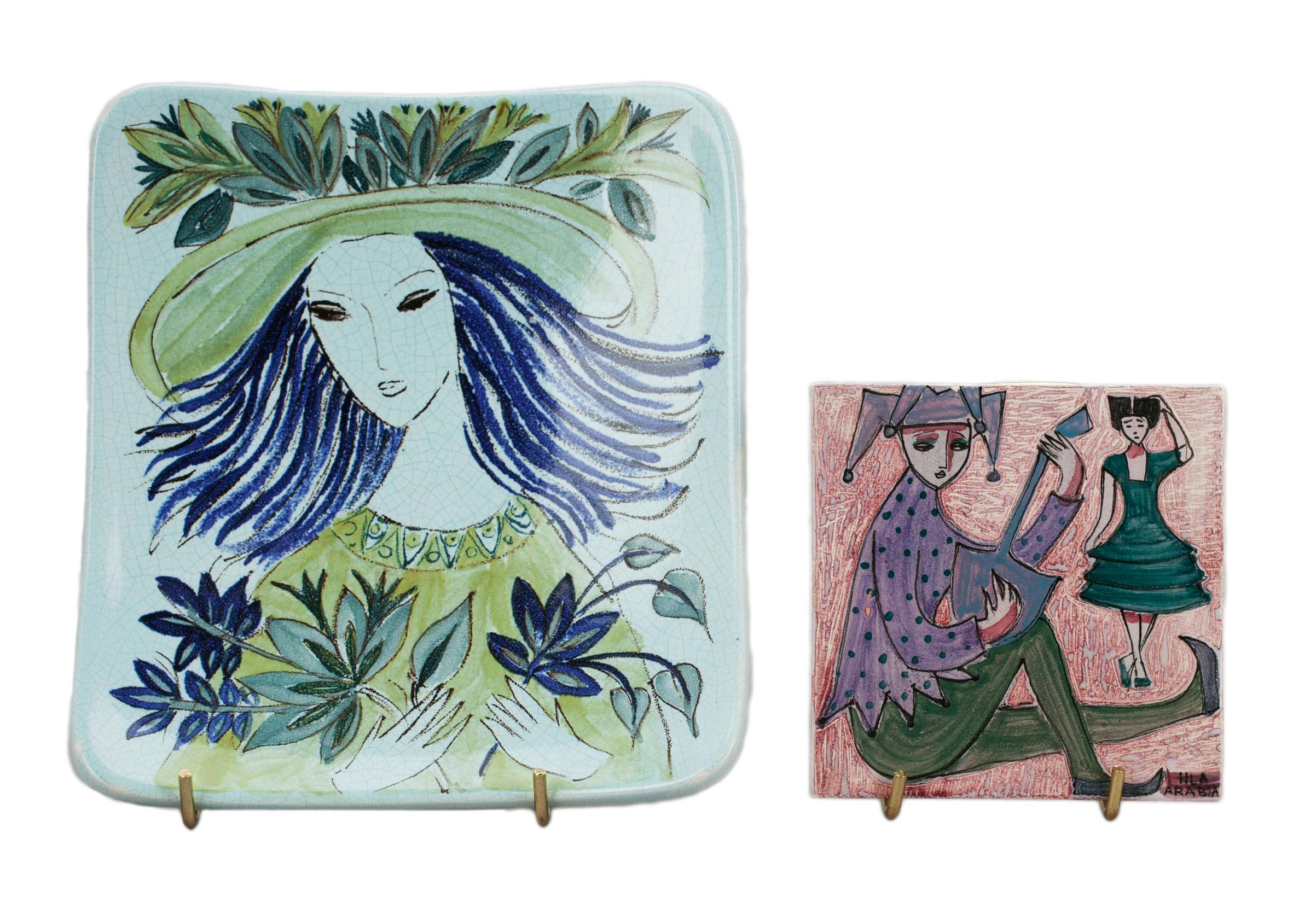
Tomula worked as an artist at Arabia until 1984. During her retirement years, Helsinki’s taxi drivers also got to know her as they drove her to the Toimela adult education center, where she continued teaching porcelain painting even after turning 70.
By that time, she had moved from Damaskuksentie near the Arabia factory to the Kruununhaka district closer to the city center.
Even in her final years, Essu maintained her own “home court” despite her frailty. In the obituary they wrote for Helsingin Sanomat, Marjatta Pauloff, Heljä Liukko-Sundström and Olli Vesa made sure to highlight Tomula’s extraordinary personality:
“She brought much joy and spark to her wide circle of friends. A good example of this side of her is that the unmarried artist gave strict instructions for her memorial service—it had to begin and end with sherry, and everyone had to be in good spirits and have fun. And that’s exactly what happened.”

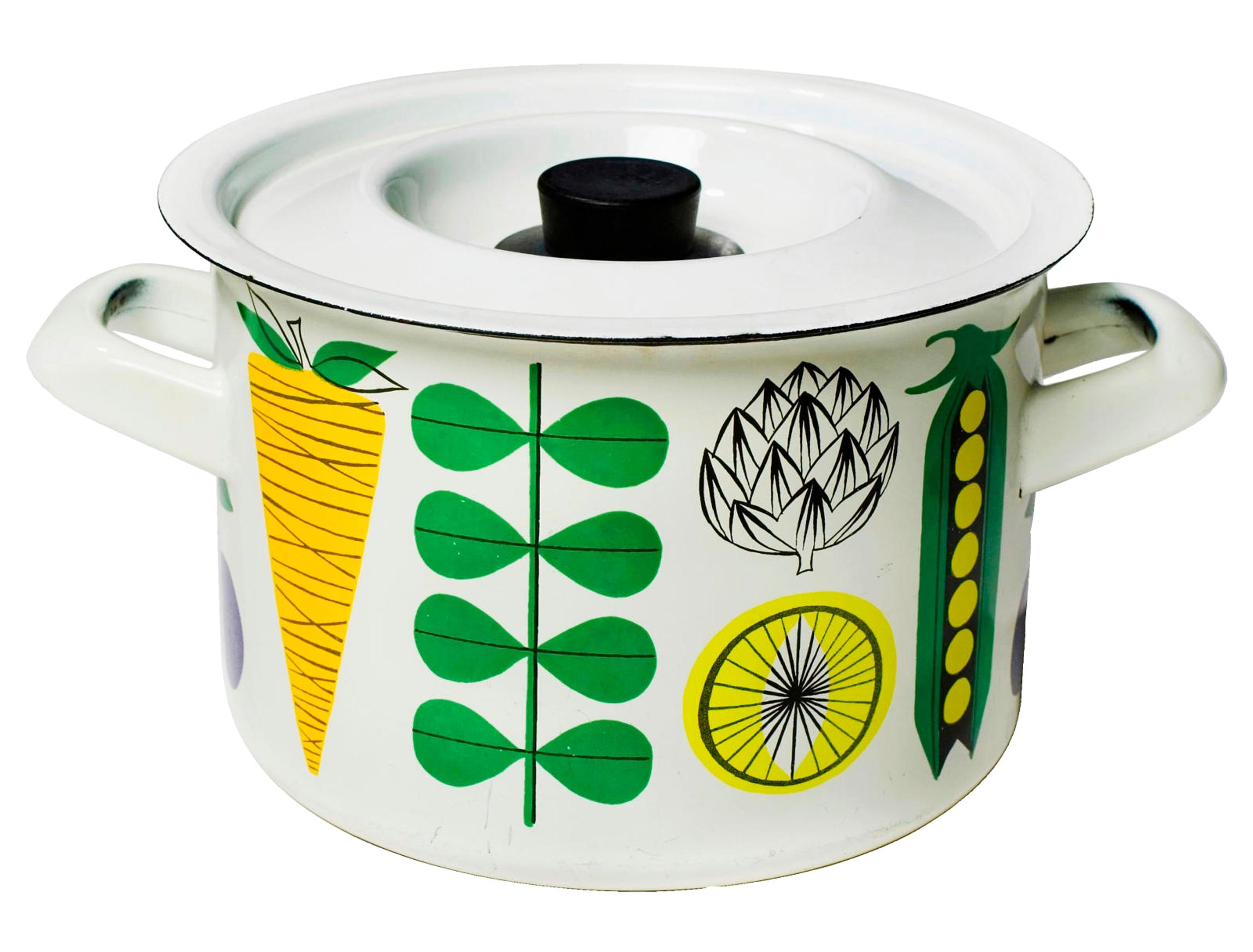
Finnish-language sources: Esteri Tomula, Arabia 1947–1984, Design Museum Foundation / Esteri Tomula Foundation, and Helena Leppänen: Keräilijän aarteet, Rakastetut Arabian astiat koristelijana Esteri Tomula. WSOY.


